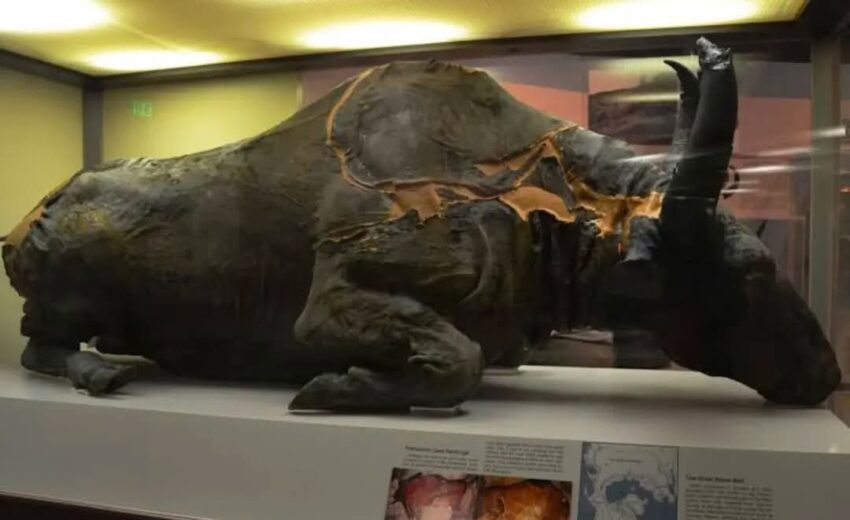An ice-age bison was discovered… then soon eaten, once the foul taste was smothered :
During Alaskan Gold Rush, eager miners used high-pressure water guns to sweep away frozen silt, possibility of gold right underneath it in gravel. They often came across mummified carcasses of large animals, but paid them little mind, tossing them to side to continue their excavations. In July, 1979, a busy miner uncovered a pair of bison feet poking awkwardly out of mud, but instead of working around it, he decided that maybe someone should take a look at his find.
What the miner had uncovered was something remarkable. They unearthed the mummified body of a 36,000 year-old Steppe bison now called “Blue Babe” in Alaskan tundra and shortly after, they sliced off a piece of its neck to eat. As remains were often incomplete, and would be discarded by miners, who were more interested in gold than in frozen animal remains. In 1979, a family of gold miners, Walter and Ruth Roman, and their sons, were mining near Fairbanks. Water from hydraulic mining hose they were using melted frozen soil Blue Babe was embedded in, thus exposing part of bison’s frozen remains. Miners named their find Blue Babe, in reference to metallic blue sheen of creature’s hide, which reminded them of Babe the Blue Ox from American folklore of Paul Bunyan. Blue’s mummy was so well preserved that there was evidence of horns and male genitalia, allowing for sex identification. Horn remnants gave an annual sequence that helped estimate his age and claw.
Miners, aware of potential significance of their discovery, decided to contact University of Alaska and palaeontologist Russell Dale Guthrie was sent to scene. Guthrie identified animal as being a steppe bison form Ice Age, and thus was probably tens of thousands of years old. In order to avoid deterioration of carcass, Guthrie opted to excavate immediately. This course of action, however, was not entirely possible, as ground was still frozen, and it was close to several large ice wedges.
